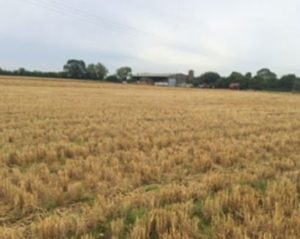Here at Explore P2P we regularly highlight loans that we think have interesting return profiles for P2P investors. Loans that have strong interest rates, and low risk of loss if the borrower defaults. To find these loans, we have to eliminate a lot of loans that don’t fit this risk profile. Here are 5 common reasons that we avoid P2P loans, and why we think you should to:
1. Loans secured against land

We are not big fans of having a lot of exposure to land in our P2P portfolios. There’s a few reasons for this. Firstly, the value of land is ‘high beta’ – the value is much more volatile than the value of other classes of real estate. As an example, some blocks of land in Spain fell in value by more than 90% during the financial crisis. Secondly, land can be very difficult to sell – it is quite common for all potential buyers to disappear during an economic downturn, because typical buyers (such as small builders or real estate developers) cannot obtain the funds to purchase land, and if they can, they will bid at very low prices. If a loan defaults, it may take many years to sell the collateral. Finally, it can be very difficult to value land. Many of the valuations provided cannot be relied upon. Often, a valuer will need to make many assumptions, including planning permissions, how much it will cost to develop an asset, a developer’s profit margins, and so on. The more assumptions there are, the less reliable a valuation is.
Be Aware that land values can change quickly and by a lot. Even Low LTv loans can be risky
2. Loans secured with rural & farming properties

Many P2P loans secured against farms and other rural businesses have defaulted over the last 2 years. Some of these loans were to fund the operations of a business, and others were to support real estate projects (construction of residential assets typically). We are not fans of these types of loans. Firstly, because valuation of the collateral can often be extremely difficult, as there are very few comparable market transactions. Valuations can also be highly dependent on assumptions about future planning decisions and development potential. It is also almost impossible to truly understand the prospects and cash-flow profile of farms and other rural businesses.
Rural and farming assets have had a poor track record recently – It isn’t likely to change
3. Small business loans used to fund 'working capital'

We have several concerns about unsecured P2P lending to small businesses. Firstly, the quality of information provided by borrowers and platforms can often be very poor. Investors are left being asked to trust the credit scoring systems of each platform. We prefer the approach of platforms such as Lending Works, who provide a lot of detailed financial information. Secondly, in many cases, the expected returns, after allowing for expected defaults, tend to be lower than for other P2P opportunities. It is true that some loans to small businesses do have a good risk profile, particularly when it is to fund growth that is backed by orders received from customers. However, too many businesses are seeking loans to fund ‘working capital’ which can often be an alternative way of saying “we are running out of cash soon”, or “the banks won’t lend to us”.
Only lend to profitable businesses, with a solid track record, that are using the funding to grow. Make sure the interest rate compensates for the risk
4. Single use commercial & industrial assets

We think it is appropriate to include in a P2P portfolio some loans that are secured by commercial & industrial assets. Examples could include office buildings or retail premises. However there are some commercial assets that have a lot of downside risk if the borrower defaults. In some cases, these assets can be worth close to zero if the borrower defaults. That is because the assets don’t have any alternative uses, which means that there could be very few buyers, and the price they may be willing to pay could be very low. Examples of common single use assets can include factory buildings, shipyards, power generation, small hotels, and shopping centres.
P2P loans secured against these types of assets Don’t tend to pay higher interest rates. investors are not getting compensated for the extra downside risks
5. Properties in poor condition

We think it is important to review a valuation report and also to look at the photographs provided. If the loan is not being used to refurbish the property, is it in a reasonable condition? If not, what does this imply about the borrower? If it is going to be refurbished, or needs work to complete it, how big a job is it? Is the timeline provided realistic? The more work that is required, the more scope there is for timelines to slip, and things to go wrong. This can quickly lead to defaults and losses for investors.
